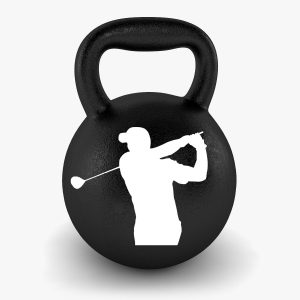
Kettlebells (or objects similar to kettlebells) have been used for training for thousands of years. Shaolin monks in China used stone padlocks for training (shi-suo gong), ancient Greeks used haltere as a swingable weight, and ancient Scots threw similar devices in the Highland games. The modern kettlebell, however, was first documented in 1704 when the word “girya”, meaning kettlebell, appeared in Russian dictionaries. The girya was used as a counterweight to measure grain and other dry goods on market-style scales. Eventually, people caught on that these weights could be used for training and were made popular by Vladislav Krayevsky, personal physician to the Czar, who used them to train the Russian army. Kettlebells quickly made their way from a conditioning tool to a sport all their own.
Kettlebell training has made a resurgence, being made popular by people like Pavel Tsatsouline and Dan John who have written numerous books on the benefits of kettlebell training. One of the advantages to kettlebells over dumbbells or barbells for fitness lies in the distribution of the weight. Very infrequently in life do we have two even masses connected by a thin, hand-sized bar. The large mass hanging below a handle has a much greater carryover to functional activities like carrying bags or lifting an object off the floor.
Proper kettlebell training promotes everything a golfer needs on (and off) the course – explosive power, stability, balance, mobility, strength, and endurance. With two kettlebells of differing weights, golfers can have an entirely functional home gym to address limitations found during fitness screening. Add in a solid understanding of how to use the kettlebells and an off-season of conditioning and strokes will start to fall off the score-card.
As shown in Week 1 of my TPI Tuesday videos, weak glutes can contribute to all of the Big 12 Swing Characteristics. By strengthening the glutes, golfers have a greater likelihood of staying in posture through impact, leading to a solid strike and a ball in the fairway. Exercises like front racked squats, kettlebell deadlifts, kettlebell cleans, and kettlebell swings all promote glute strengthening and explosive power. Swings offer all of the major benefits of kettlebells in one small package. There is no “one size fits all” exercise for golf or life, but swings come pretty close.
With the 90/90 test, TPI has shown that a lack of scapular stability can lead to losing posture/early extension, chicken-winging, or a flying elbow during the swing. Many people have difficulty stabilizing the shoulder in golf posture, where they are able to stabilize when standing upright. Well executed kettlebell get-ups take the shoulder through multiple positions from above the body when lying on the floor to lift overhead in standing. These dynamic positions create a stimulus for the rotator cuff to hold the shoulder in place through many positions similar to those of the golf swing. The scapular stability and strength required to string together get ups helps create a bulletproof shoulder, reducing the risk of injury.
Kettlebell training can be a powerful tool for golfers to use. Make sure to look through the exercise video library for some kettlebell exercises to add to your fitness program. If you aren’t comfortable teaching yourself these movement, reach out and I can teach you. Good luck and be safe!
